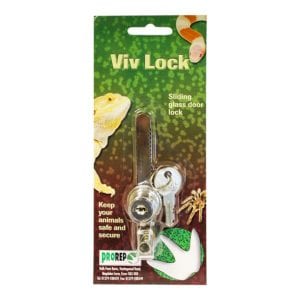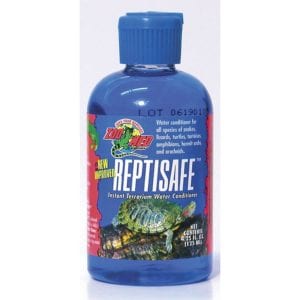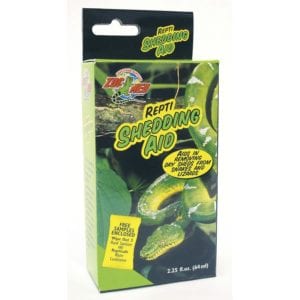Top tips;
Cage locks – As we continue into the snake breeding season, its worth combating the wanderlust of horny male snakes. All too often we hear of reptiles escaping from their vivarium by sliding open  their glass doors – especially with male snakes on walk about looking for a female. We always advocate the use of a vivarium lock anyway, but critical at this time of the year.
their glass doors – especially with male snakes on walk about looking for a female. We always advocate the use of a vivarium lock anyway, but critical at this time of the year.
They are easy to fit, the bar slides in between the two pieces of glass so the hood of the bar catches one piece of glass. The finger nut needs to be tightened and then the lock is slid onto the bar. Some locks need to have the key to lock, others lock as its slid onto the bar. It’s that easy!
Skin shedding – Reptiles (and even amphibians) shed their skin as they grow, but will continue to do this all of their lives – just at different rates. Whilst young, as an example, a Corn snake will shed its skin around every four weeks. Once adult this lessens until as an old snake it will only shed its skin a couple of times a year. Injury will also increase the regularity of skin shedding as the wound heals. A healthy snake should shed its skin in one piece, lizards in pieces (some may be large pieces). In captivity skin shedding can cause issues, the skin sometimes will not come off in one piece (snakes) and fastens itself to the new skin – stubbornly refusing to come off. This can be a sign of ill health, but much more likely the husbandry isn’t spot on. Even species from arid and desert regions need moisture to successfully shed their skin, something often overlooked by keepers. For many species a hide with a humid area is ideal, this can be packed with sphagnum moss or orchid bark and must be kept damp. Some keepers provide this area within a “box” so that the damp doesn’t spread into the arid environment. As husbandry techniques improve it is now recognised that many species would be better suited on a deep soil mix within their vivarium, with varying levels of dampness as the animal burrows further down. A log or other hiding article will also maintain a  damper area. This is a very natural way of combating this issue.
damper area. This is a very natural way of combating this issue.
 If your snake does have skin shedding problems it will require assistance. There are some commercially available products claiming to help such as Zoo Med Repti Shedding Aid. We tend to use some simple methods that tend to work – the snake needs to be damp for a couple of hours. An old snake keeper tip is to place the snake in a wet pillow case – don’t forget it needs to be kept wet whilst the snake is inside, if it dries out it won’t work. This technique tends to work for lizards too. With snakes there is the added problem of the “eye caps” – this is the skin covering the eyes, as snakes do not have eye lids. The eye caps must come off, otherwise it will lead to infection. Always check a snakes shed skin, even if it appears to have come off in one piece – you can easily see the eye caps, they look like clear domes. If the skin is missing these eye caps, they are still stuck on the snakes eyes. There are techniques available to the advanced keeper, but for most it’s a trip to the vet as soon as possible.
If your snake does have skin shedding problems it will require assistance. There are some commercially available products claiming to help such as Zoo Med Repti Shedding Aid. We tend to use some simple methods that tend to work – the snake needs to be damp for a couple of hours. An old snake keeper tip is to place the snake in a wet pillow case – don’t forget it needs to be kept wet whilst the snake is inside, if it dries out it won’t work. This technique tends to work for lizards too. With snakes there is the added problem of the “eye caps” – this is the skin covering the eyes, as snakes do not have eye lids. The eye caps must come off, otherwise it will lead to infection. Always check a snakes shed skin, even if it appears to have come off in one piece – you can easily see the eye caps, they look like clear domes. If the skin is missing these eye caps, they are still stuck on the snakes eyes. There are techniques available to the advanced keeper, but for most it’s a trip to the vet as soon as possible.
Water quality – This isn’t in the context of fish or aquarium keeping, but is similar. Some keepers of amphibians do monitor their water quality like a fish keeper, but for this article its about drinking water, spraying and environmental enrichment (such as waterfalls). We always advocate the use of dechlorinated water – this can be tap water that has been stood for 24 hours, or treated with a product such as Zoo Med ReptiSafe. We always use reverse osmosis water for our natural terrarium, and in spraying water and enrichment features such as waterfalls. This water is missing the minerals which bung up spray nozzles and stops the resulting water marks from splashes onto the vivarium glass.
